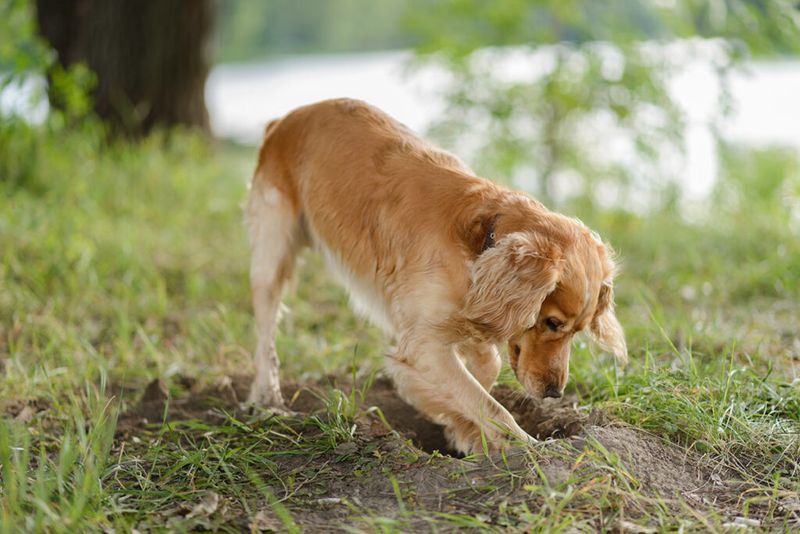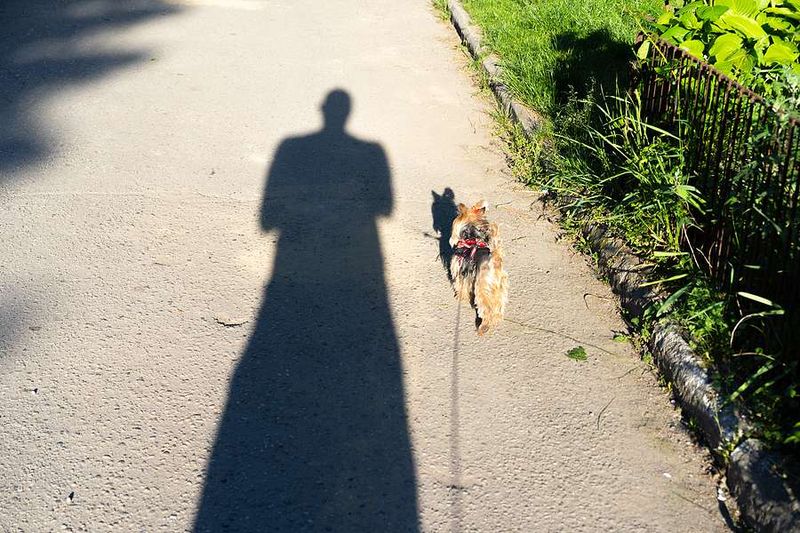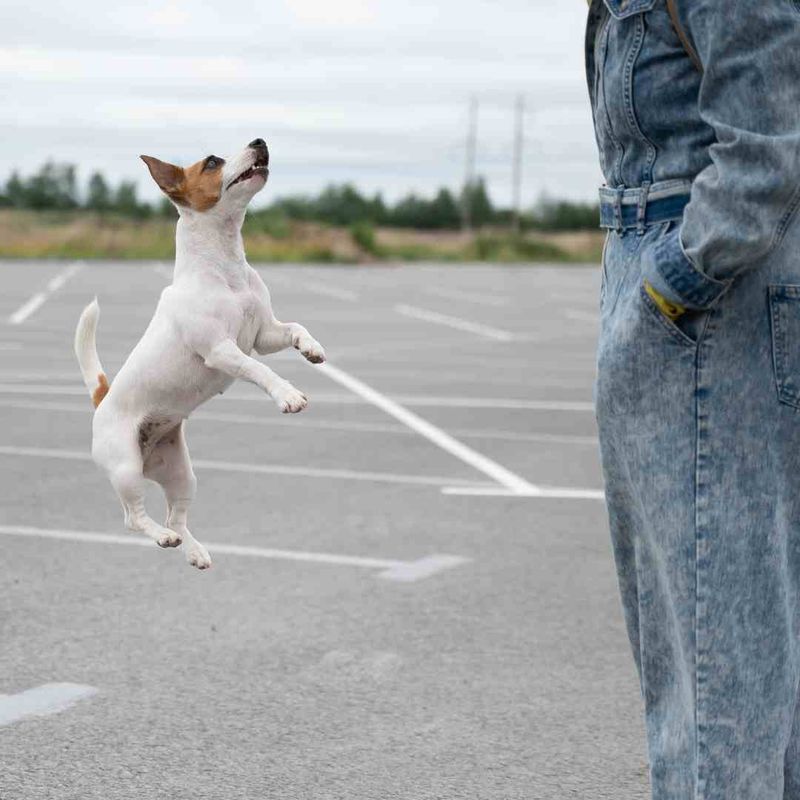Understanding canine behavior is crucial for every dog owner or enthusiast. Dogs, like humans, can exhibit dysfunctional behaviors, which may indicate underlying issues. Recognizing these behaviors early can lead to more effective interventions and a happier life for both the dog and its owner. This article explores thirteen common indicators of canine dysfunctional behavior, each with its unique manifestations and potential causes. By identifying these signs, owners can take appropriate steps to address them, ensuring a healthier and happier relationship with their furry friends.
Excessive Barking
A dog barking occasionally is normal, but when it becomes excessive, it might indicate stress or anxiety. Dogs bark to communicate, but constant barking can be a sign of discomfort or fear. Changes in environment or routine can trigger such behavior.
It’s essential to observe the context in which the barking occurs. Is it at strangers, during the night, or without any apparent reason? Understanding these patterns can provide clues. By identifying triggers, owners can work on desensitizing the dog to such stimuli.
Training and positive reinforcement often help in managing excessive barking.
Destructive Chewing
Destructive chewing can be frustrating for any dog owner. While chewing is natural for dogs to relieve stress or teething pain, it becomes problematic when it extends to household items.
Puppies may chew on shoes, furniture, or anything within reach. This behavior may stem from boredom or anxiety. Ensuring the dog has plenty of chew toys and mental stimulation can mitigate this behavior.
Regular exercise and interactive toys can keep a dog occupied. Using deterrent sprays on furniture might also deter them from chewing on inappropriate items.
Aggression Towards Other Dogs
Aggression towards other dogs can be alarming, but it often stems from fear or a lack of socialization. Dogs may show aggression due to territorial instincts, fear of the unfamiliar, or past traumatic experiences.
It’s vital to address this behavior early, as it can lead to dangerous situations. Socializing puppies with other dogs from an early age can prevent such aggression.
In some cases, professional training may be required to manage and redirect aggressive behavior. Building confidence through controlled exposure can also be effective.
Separation Anxiety
Separation anxiety is a common issue where dogs become distressed when left alone. Symptoms include excessive barking, destructive behavior, and attempts to escape.
It generally occurs because dogs are social animals and crave companionship. Gradually acclimating a dog to being alone through short departures can help ease anxiety.
Special toys or puzzles that occupy the dog’s attention can also be beneficial. In severe cases, consulting a veterinarian or professional trainer might be necessary to find the best approach.
Food Guarding
Food guarding is a behavior where dogs become possessive of their food, often growling or snapping when approached during mealtime. This behavior is usually rooted in insecurity or past experiences of food scarcity.
To address food guarding, feeding the dog in a calm environment can help reduce anxiety. Gradually desensitizing them to human presence during feeding times may also be effective.
Rewarding calm behavior around food can reinforce positive associations. In some cases, professional guidance may be necessary to address severe guarding tendencies.
Fear of Loud Noises
Dogs with a fear of loud noises, such as thunder or fireworks, may tremble, hide, or even try to escape. This fear is often innate, but traumatic experiences can exacerbate it.
Creating a safe space for the dog to retreat during loud events can provide comfort. Calming aids, such as anxiety wraps or pheromone diffusers, might also be beneficial.
Gradual exposure and desensitization to the noises, paired with positive reinforcement, can help reduce fear. Consulting a veterinarian for additional options may be necessary for severe cases.
Obsessive Tail Chasing
Tail chasing can be a playful activity, but when it becomes obsessive, it may indicate underlying stress or medical issues. Dogs may chase their tails out of boredom, anxiety, or due to a genetic predisposition.
Owners should monitor the frequency and intensity of the behavior. Providing mental stimulation, regular exercise, and toys can redirect energy elsewhere.
In some cases, a visit to the vet may be warranted to rule out medical concerns. Behavioral training can also aid in managing obsessive tail chasing.
Excessive Digging
Digging is a natural behavior for dogs, but excessive digging can become problematic, especially in gardens. Dogs dig to explore, hunt, or create a cool spot to rest.
To curb excessive digging, providing a designated digging area can satisfy this instinct. Plenty of exercise and mental stimulation can also reduce the urge.
If digging is anxiety-driven, identifying and addressing the cause may be necessary. Training and redirection techniques can be effective in managing this behavior.
Pacing
Pacing in dogs can indicate stress, anxiety, or an underlying medical issue. Dogs may pace due to changes in their environment, routine, or when they’re in pain.
Observing the context and frequency of pacing can provide insights into its cause. Ensuring a stable routine and a comfortable environment can help alleviate stress-related pacing.
In cases where medical issues are suspected, consulting a veterinarian is advisable. Behavioral training may also assist in reducing anxiety-driven pacing.
Compulsive Licking
Compulsive licking can be a sign of anxiety, allergies, or underlying health problems. Dogs may lick themselves excessively, leading to sores or infections.
Identifying the root cause of this behavior is crucial. For allergies, dietary changes or medications might be required. For stress, providing mental stimulation and a calm environment can help.
In some cases, professional guidance may be necessary to manage compulsive behaviors. Addressing the behavior early can prevent further complications.
Shadow Chasing
Shadow chasing may seem amusing, but it can become problematic if it turns into an obsession. Dogs may chase shadows out of boredom or because they find it rewarding.
Monitoring the behavior’s frequency can help determine if it’s becoming excessive. Providing alternative forms of entertainment and mental stimulation can redirect the dog’s focus.
In cases where shadow chasing is deeply ingrained, professional training may be necessary. Observing triggers and managing the environment can also be beneficial.
Inability to Relax
Some dogs struggle to relax, constantly moving and unable to settle. This behavior can be linked to anxiety, lack of exercise, or insufficient mental stimulation.
Ensuring the dog gets plenty of physical activity and engaging activities can help them expend energy. Creating a comforting, calm environment can also promote relaxation.
In cases where anxiety is the root cause, professional advice may be required to find appropriate solutions. Regular routines and relaxation techniques can assist in calming the dog.
Overexcitement
Overexcitement in dogs can lead to hyperactive and uncontrollable behavior. This often occurs when meeting new people or in stimulating environments. Dogs may jump, bark, or become rowdy.
Training to promote calm behavior, rewarding quiet and composed actions can mitigate overexcitement. Consistent reinforcement of desired behavior is key.
Providing structured activities and regular exercise can help manage energy levels. In some cases, professional training might be needed to address persistent overexcitement issues.













